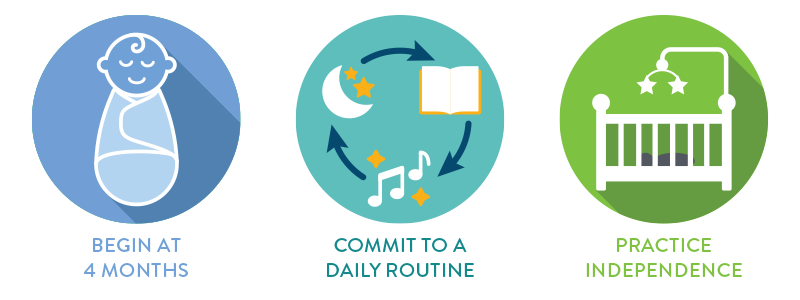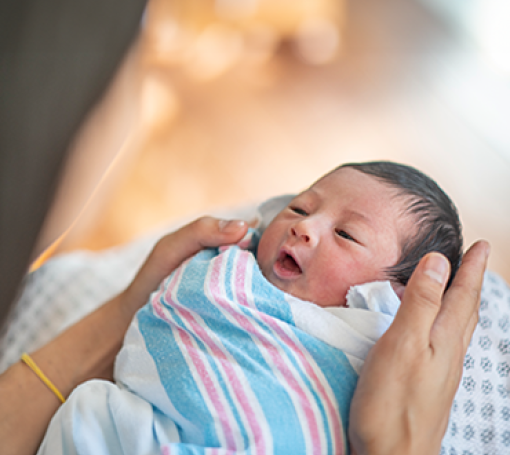
Why is learning to sleep important?
Sleep is essential for growth and development. It is important for children to learn to sleep independently and for you, as a parent, to receive adequate rest to care for your baby. Just like learning to talk or ride a bike, learning to sleep is something that you have to teach your child. Teaching them to sleep will benefit their brain health, learning, emotional regulation, and physical repair.
How much sleep does my child need?
Babies and toddlers benefit from the following amount of sleep:
- Infants (0–3 months): 14–17 hours, including naps
- Babies (4–12 months): 12–16 hours, including naps
- Toddlers (1–2 years): 11–14 hours, including naps
- Preschoolers (3–5 years): 10–13 hours, including naps
When can my baby learn to fall asleep on their own?
Babies can be encouraged to fall asleep on their own beginning at 4 months old. It is recommended that children are taught to fall asleep independently before 18 months old. Sleep can be thought of like language – the sooner you start, the easier and more natural it becomes.
How can I sleep train my child?
Many sleep training methods are available. These methods range from a quicker “cry it out” approach, to a slower, more gentle process. All these methods work, and it is important to follow one that best suits your family. All sleep training methods include two core concepts: establishing a consistent routine and allowing time for your child to practice independently. Below is an example of a recommended strategy for sleep training:
Follow a 3-step routine that is repeated at all sleep times:
- Transition: Help your child understand it is time to transition to bedtime. One way to do this is by reading a book.
- Soothe: Encourage a simple, repetitive behavior that promotes calmness such as sucking fingers/binky, humming a song, or hugging a lovey (after 12 months old).
- Practice: Leave your child alone in their safe sleep space for 5 minutes.
These three steps should be seen as a loop that will need to be repeated while your child is learning to fall asleep independently and stay asleep in their own environment. Remain consistent in the routine you choose to help your child understand and learn this new skill.
It is natural to feel frustrated if your baby struggles to learn this new skill or experiences sleep regressions. Remember to be patient as they develop this skill of sleeping and offer positive reinforcement whenever possible.
Safe Sleep Environment
Always place your baby to sleep in a safe sleep environment. Do not allow them to sleep with pillows, blankets, or stuffed animals until 12 months of age in order to reduce the risk of SIDS.
Helpful Tips
- Commit to a simple daily pattern
- Create a consistent routine for both naps and night
- If your child is a toddler, communicate why this is important
- Start bedtime early, as it is difficult for children to fall asleep if they’re too tired
- Avoid technology (screens before and during sleep times). This exhausts and stresses the infant/toddler brain
- Avoid co-sleeping before 2 years old due to SIDS risk
- The more kids sleep, the better they sleep
Keep Reading
View All Posts
Helping Kids Breathe Easier
By checking asthma control at every well care visit, we can identify changes early and make sure each child has the support they need to breathe comfortably and stay active.

Protecting Your Newborn from Hepatitis B
Learn why the birth dose of the hepatitis B vaccine matters for every baby.

Choking Prevention and First Aid
Learn how to recognize choking risks, prevent accidents, and respond effectively with first aid to keep infants and children safe.

